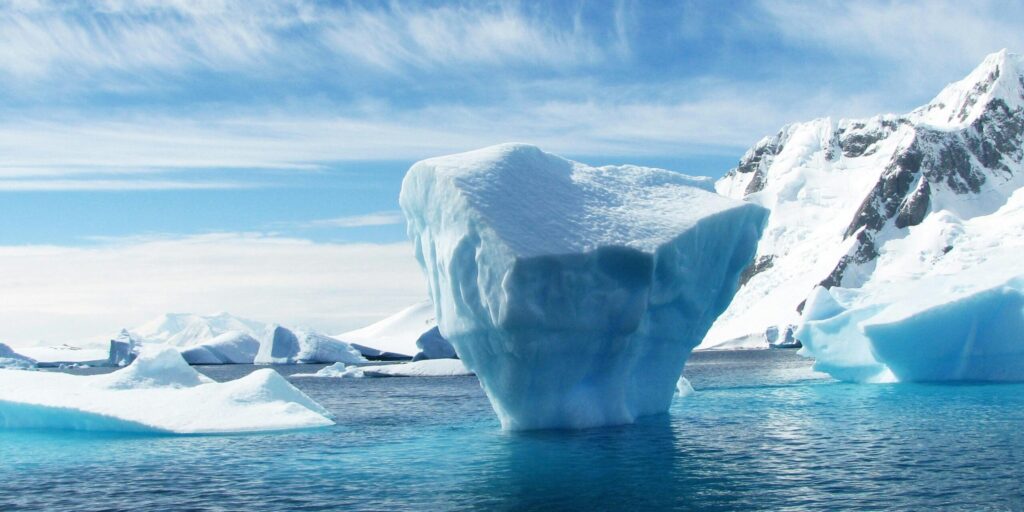Think about a place where life can thrive against all odds, strong organisms that survive even in severe coldness and high winds. Welcome to Antarctica, which is known for its ice and desolate land. But beneath it lies an unsuspected biodiversity hot spot. In this blog post, we take you on a magical journey starting from icy landscapes at the South Pole down to the colorful blooms for which these harsh environments are not suited. We will unveil the incredible adaptations of plants found in the Antarctic region; these fragile-looking plants not only manage to survive in such an environment but also support other ecosystems. Let’s explore how nature surprises us by defying norms; discover resilience and beauty blending together in one of Earth’s toughest habitats!
Antarctica’s Special Flora Gets Introduced
To many people, Antarctica appears like nothing more than a vast expanse of snow and ice devoid of anything resembling plant life. Surprisingly, however, flowers bloom here too! There is no doubt that this remote continent is generally considered an inhospitable territory for any form of life, but it houses an amazing variety of flora that has adjusted itself to withstand some very hostile conditions on our planet. We will reveal more about this icy wonderland, where chances seem slim, but still, life goes on, and tough plants play important roles within their ecosystem balance. Let us go through a world full of hardships where beauty prevails.
The Harsh Environment of Antarctica and Its Impact on Plant Life
Antarctica is usually described as a barren land with extremely cold temperatures, sometimes dropping below freezing. Living organisms, especially plants, face significant challenges related to surviving in such an icy terrain.
Due to long polar nights and relentless winds, its environment remains stark and unforgiving. In winter, sunlight is scanty, and plants get little energy.
Soil quality also determines which species can survive in these conditions. Most of this territory, however, is not made up of fertile soil but rock or ice. Therefore, only the most resilient types of plants have been able to adapt to it.
These facts influence their growth patterns and reproductive strategies. They need to take full advantage of their short growing seasons while simultaneously withstanding constant environmental stress that would overwhelm the majority of other kinds of plants elsewhere on Earth.
The Two Species of Native Flowering Plants: Antarctic Hair Grass and Antarctic Pearlwort
Antarctica may seem like a desolate place but it has got two unique flowering plant species namely; Antarctic hair grass and Antarctic pearlwort. Only these hardy species manage to survive where others cannot.
The slender green blades distinguish the Antarctic Hair Grass, reaching heights up to around 20 centimetres. This resilient plant anchors its roots deep into the soil for seasonal warmth and light. By surviving extreme coldness, it has found its way into areas once regarded as uninhabitable.
While on the other hand, the leaves are small and clustered around delicate stems giving the compact form found in Antarctic Pearlwort. Such areas are usually covered by stones forming bright patches in contrast with stark landscapes. Both kinds help in stabilizing soil and providing micro fauna homes thus essential to ecosystems.
They may be brief moments, but they bring life amidst ice and snow, which illustrates how nature tenaciously clings on even under dreadful circumstances like this one.
These Plants’ Adaptations and Survival Strategies
The native plants of Antarctica have evolved incredible adaptations on one of the world’s harshest places to enable them to survive. The Antarctic Hair Grass and Antarctic Pearlwort are both examples of hardiness in extreme conditions.
Many such flowering plants grow on or near the ground. This approach lessens the impact of strong winds and very low temperatures. A compact habit helps maintain soil warmth, which supports growth during brief summer months.
Furthermore, they have specialized leaves that can withstand high levels of salt. Adaptation is important here because when snow melts it may lead to accumulation of salts in soils.
Furthermore, these plant species are efficient at capturing sunlight throughout the long days of summer. They utilize photosynthesis more efficiently than many temperate species, thereby taking advantage of as much light as they get beyond thick clouds.
This capacity for rapid reproduction also promotes survival. During short warm periods, they produce seeds rapidly so that even if conditions turn adverse again shortly after blooming there will still be continuity.
Other Fascinating Vegetation in Antarctica: Mosses, Lichens, and Algae
Antarctica is not all about beautiful flower-bearing plants. The continent also has a wide range of mosses, lichens, and algae that prosper in this harsh environment.
Mosses are some of the toughest organisms here. In the summer months, their lush green carpets cover the ground surface. These minute plants withstand freezing temperatures and intense wind while helping build soil structure.
In contrast lichens represent an intriguing symbiosis between fungi with algae or cyanobacteria. Their vivid colours provide life touches over rocky areas.They have the capacity to survive for long without water hence able to cope up with harsh UV radiations too.
Algae colonize melting ice and snow, contributing significantly to primary productivity. These blooms create magnificent color changes during favorable seasons along glacial landscapes that do not last.
Each element plays a role in Antarctica’s delicate ecosystem, illustrating how nature endures against all odds.
Human Impacts on Antarctica’s Flora: Climate Change and Tourism
Human activities have significantly transformed the landscapes of Antarctica. Global warming, which leads to climatic change, is one of the greatest threats facing its fragile ecosystems. As temperatures rise, native plant habitats are destroyed due to melting glaciers and changing weather patterns.
Additionally, tourism poses a challenge. Excessive foot traffic can damage fragile plants, interfering with their natural growth cycles. In addition, tourists may inadvertently introduce non-native species, further complicating ecological dynamics.
Their impacts are felt long after they happen across entire communities of organisms. Changes in plant life affect soil composition as well as water quality thereby creating a series of negative ramifications for an already delicate environment.
Through these impacts, we must remain conscious of our actions. We must understand our roles in conserving this unique ecosystem to protect the integrity of flowers blooming in Antarctica and their surroundings.
Conservation Efforts to Protect Antarctica’s Fragile Ecosystem
It is important to conserve this vulnerable ecosystem through various efforts in Antarctica. International agreements like the Antarctic Treaty System have been put in place to preserve this particular habitat for future generations.
Research stations are crucial platforms from which changes can be monitored ecologically. Therefore, scientists study plants and monitor climate-induced alterations. Their research findings also help inform conservation approaches.
Tourism is another field of concentration. Guidelines must be adhered to, and admission must be controlled to reduce people’s impact on vegetation and wildlife.
Other efforts involve restoration projects that aim to reestablish habitats damaged by human activities. Planting indigenous plants back into these areas leads to ecosystem recovery.
This shows that collective movements among nations have shown a strong desire to keep it safe. What we do today has direct consequences for Antarctica’s biodiversity, which will sustain its natural legacy to future generations’ enquirers and scientists.
Appreciating the Beauty and Resilience of Antarctica’s Flora
Although it appears as a desolate plain, Antarctica supports extraordinary plant life against all odds. The elegant beauty of Antarctic Hair Grass and Antarctic Pearlwort demonstrates nature’s resilience in one of the toughest environments on Earth. These flowering plants have adapted over millennia to survive extreme cold, limited sunlight, and strong winds.
Beside those blossoming flowers in this vicinity are mosses, lichens, and algae whose presence adds color. Each organism plays an important role in maintaining this delicate ecosystem’s balance. They exist not merely to survive but also to thrive through everything they go through.
Nonetheless, humans are endangering this unspoiled environment. Climate change is affecting habitats at alarming rates, while tourism increases foot traffic that can disrupt fragile sites. Conservation measures are essential for preserving these special types from degradation and further harm.
Such is the tale told by Antarctica’s greenery; it blooms despite adversity as if saying life won’t stop even when things get tough there. Understanding such diversity helps us appreciate nature more than ever before as well as highlights our duties towards protecting them in front of us.
Visit our blog section to read more.






